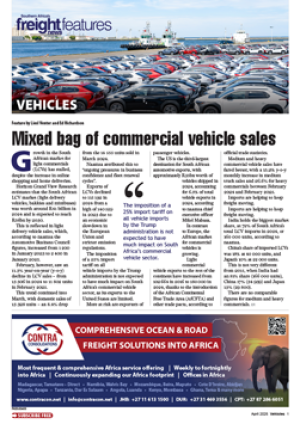Said our senior freight contact: “This was the successful forestalling of the iniquitous 8.2% currency adjustment factor (CAF) which ESAC was to impose from April 15.” In the BAF battle, however, the current debate revolves around the release of that “secret” formula – promised in April, but as yet undelivered. “No less than five months have elapsed since the ESAC undertaking at the Cape Town meeting to provide full details of how the BAF is formulated/structured – along with the proportion borne by the ocean carriers and the seafreight users respectively,” said the FTW source. “The issue is in the forefront of the minds of most of the affected parties, and it must be borne in mind that the “temporary emergency bunker surcharge” has been in place for approximately 32-years to my knowledge. “It should not be too difficult to impart the information which ESAC has already sanctioned.” But, despite these sentiments being expressed in an e-mail this month to the ESAC secretariat in London, nothing has yet been forthcoming. However, it’s the overall principle of adjustable surcharges – and, therefore, freight rates – that is at question, according to Lossau. “Think just how complicated the lines’ invoices are – and the amount of administrative time that is spent checking up on each of these possible variables in them,” she said. And, for the record, Lossau has detailed just some of the “surcharges” and additional costs levied by the shipping lines on cargo to/from SA in recent times. These have included: Bunker surcharges; currency surcharges; container cleaning charges (whether clean or not, and sometime levied on both the importer and exporter of the same box); data capturing fees; carrier/merchant haulage charges; security surcharges; bill of lading release charges; container handover charges; congestion surcharges (currently suspended); peak season surcharges; Johannesburg turn-in fee for containers (imports); Johannesburg pick-up charge for containers (exports). “In addition,” said Lossau, “we have a situation whereby the shipping lines “mark up” and make profits on the actual port costs for things like overstay charges and late clearance charges – sometimes by as much as a five-fold mark up.” Hence the call, she added, for an all-in, one-off freight rate – with the obvious benefit that this cannot be adjusted on an ad-hoc basis as surcharges can, and allows for better forward planning by shippers. “The only exception to this is that, in SA, the terminal handling charge (THC) was traditionally paid by the cargo owner direct to the port,” Lossau told FTW. “This was however changed a few years ago and is now paid by the shipping lines to the port. “But we are of the belief that the actual cost of the THC must remain transparent and should be known to all parties and that the shipping lines must not be able to “mark up” the cost of the THC when they invoice the cargo owners.” However, it appears that the shipping lines are loathe to give up the benefits they see in conference activities on a voluntary basis – and legal action has now become part of the shippers’ armoury. “The SASC is of the belief that the past collusion between the shipping lines has to stop,” Lossau said, “and we will be using the SA anti-competition law – and possibly that of the EU in Brussels – to force the lines to stop this illegal behaviour”.
